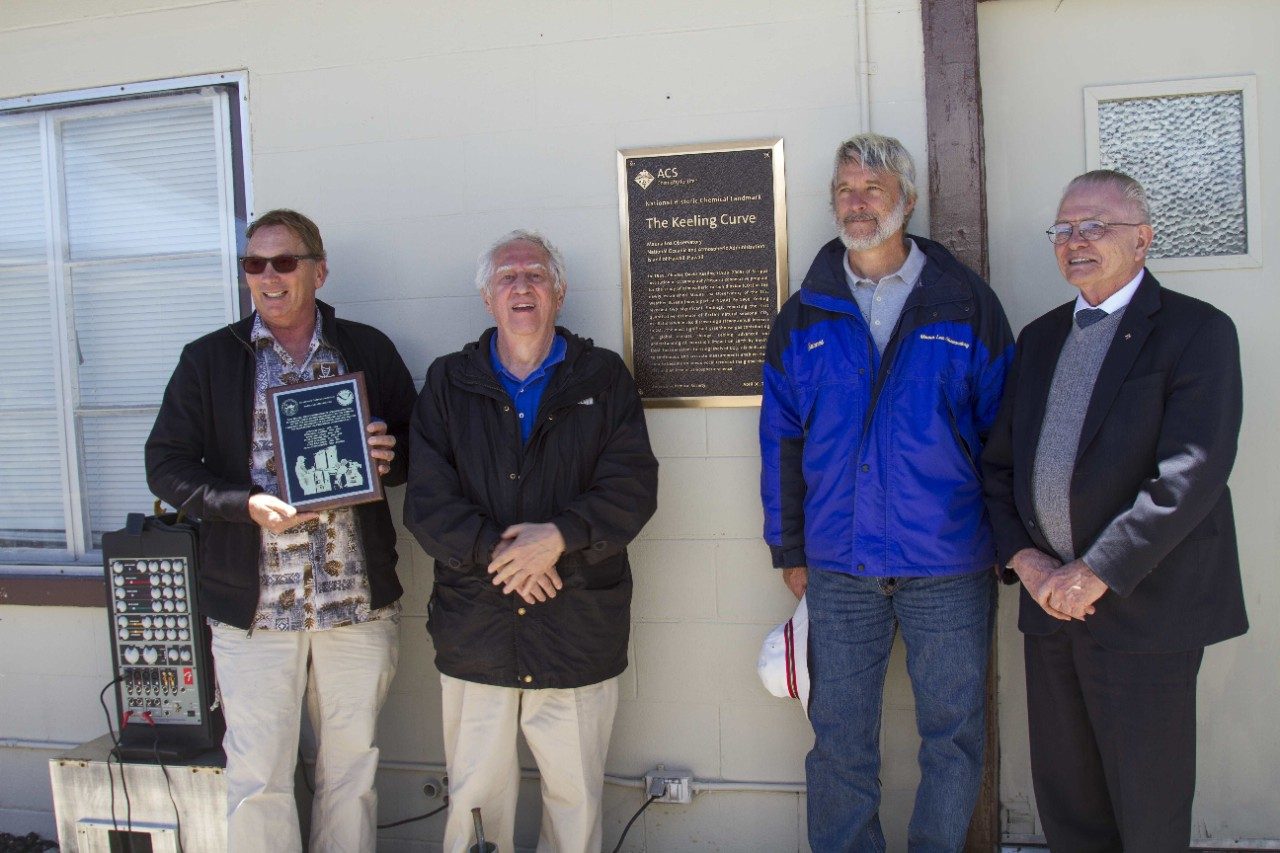FOR IMMEDIATE RELEASE | May 01, 2015
Atmospheric CO2 measurement tool named National Historic Chemical Landmark at Mauna Loa Hawaii

May 1, 2015 —The American Chemical Society (ACS) has designated the Keeling Curve — a long-term record of rising carbon dioxide (CO2) in the planet’s atmosphere — as a National Historic Chemical Landmark. The dedication took place yesterday at the National Oceanic and Atmospheric Administration’s Mauna Loa Observatory in Hawaii.
In March 1958, the late geochemist Charles David Keeling of Scripps Institution of Oceanography, University of California, San Diego, began taking measurements of CO2 in the atmosphere. These systematic measurements have become one of the most recognizable records of mankind’s impact on the Earth, linking rising levels of CO2 from man’s burning of fossil fuels to the warming of the planet.
“The Keeling Curve is an icon of modern climate science,” said Thomas J. Barton, Ph.D., immediate past president of ACS. “Dave Keeling’s meticulous research provided scientifically credible evidence that has proved critical to understanding and addressing human impacts on our environment. Keeling recognized in 1960 that fossil fuels are driving global atmospheric change, which presents serious challenges for Earth and its people. The global impacts of climate change are what make Keeling’s work so important, and so celebrated, today.”
The work of Charles David Keeling and the partnership he formed with NOAA continues today. Keeling’s son Ralph leads the Scripps CO2 Group. The Mauna Loa site is among 10 locations from the South Pole to Alaska at which air samples are regularly collected in flasks for analysis for the Scripps CO2 Group. The Mauna Loa Observatory is a cornerstone of NOAA’s Global Greenhouse Gas Reference Network, measuring a range of greenhouse gases, ozone depleting gases, air pollutants and the sun’s radiation. NOAA scientists take continuous measurements from Mauna Loa and more than 70 sites around the world. These high-quality data provide vital environmental intelligence for understanding global weather and climate.
A second ceremony will take place on June 12 to unveil a plaque marking the National Historic Chemical Landmark designation at Ritter Hall on the Scripps campus, the site of Keeling’s lab, where the current Scripps CO2 Group operations continue today.
“This plaque is a great tribute to all the people who worked tirelessly over the years to sustain these detailed measurements,” said Ralph Keeling. “The Mauna Loa CO2 record changed how we view the world. It proved for the first time that humans were altering the composition of air globally, and it thereby legitimized the concern over human-caused climate change.”
The American Chemical Society established the National Historic Chemical Landmarks program in 1992 to recognize seminal events in the history of chemistry and to increase awareness of the contributions of chemistry to the well-being of society.
The American Chemical Society is a nonprofit organization chartered by the U.S. Congress. With more than 158,000 members, ACS is the world’s largest scientific society and a global leader in providing access to chemistry-related research through its multiple databases, peer-reviewed journals, and scientific conferences. Its main offices are in Washington, D.C., and Columbus, Ohio.
Media Contact
Joan Coyle
j_coyle@acs.org







